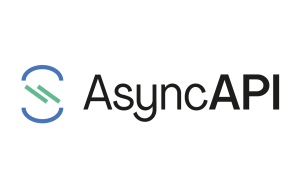AsyncAPI is an initiative for standardizing message-driven APIs. The community has a healthy mix of enterprise, solopreneur/consultants, startups and open source community support. In addition to the human element, the API specification is the tangible standard and key to a healthy API life cycle. And since the AsyncAPI spec is a sister spec to the mature OpenAPI OAS spec, the learning curve is significantly lower.
Access to experts of event-driven architecture and tooling are also significant reasons why the AsyncAPI initiative is a resource for businesses to achieve real-time value. Smart city IoT and financial services are the most well known initial areas and we invite contributors from every space. ThoughtWorks recognized AsyncAPI as a worthy tool to assess in its 2020 Q2 Technology Radar.

What was unique about this conference?
The speed that the 1st ever AsyncAPI global conference was organized was impressive. Since it was announced, it came together within 2.5 weeks. The most important thing I learned from the conference was how well it was run. Simplify and deliver.
This conference reflects the core values that the AsyncAPI community embodies making it an authentic place to contribute, grow and collaborate.
We can learn a lot from how healthy open source communities are run.
Transparency, fairness, trust, appreciation and visibility of contributions of all types explain why building up social capital is key for adoption.
AsyncAPI ran the conference in a hybrid asynchronous mode which is scalable and other groups can adopt the same method and quickly have. They invited all selected speakers to pre-record their sessions. The full conference is an engaging seven-hour marathon. Luckily, each talk and accompanying deck are available in this article.
Conference Website and hashtag #asyncapiconf
Benefits of this event hybrid approach include
1. Engagement Super Powered
Presenters can focus on the attendees’ questions during the event. Presentations and streams are available immediately. The prerecorded talks plus the livestream as a recording become a built-in self-serve model. Easy to collaborate “glocally”‘ (globally and locally).
2. Engagement Shifted
Instead of furiously taking notes, attendees can really pay attention to the speakers knowing the knowledge and concerns will be both available later and they can interact with the speaker right then. The chat for the stream is also available to all so you can see the kinds of questions being asked.
3. Low Overhead
No registration needed, free and administratively easy to maintain during the event (you can see the counter of attendees already at 300) and going forward.
4. Speed
Fast to put together and generates wide momentum.
5. Asynchronous Value
Participants from anywhere in the world can join (Except for any countries who can’t access YouTube).
6. Community moderated
Organizers create upfront expectations of YouTube guidelines and how to respect each other during the event. Organizers help moderate to make sure attendees have a positive experience while interacting with the chat and throughout.

highlights of the conference included old friends and new friends JAMMING out to the sound of Norberto Herz’s IoT Radiohead Demo.
Paul Taylor, Strategic Advisor at MuleSoft, kicked off the conference from Sydney, Australia and provides an architect’s view on lessons learned while implementing event-based patterns for large wealth management and large insurance clients. Paul’s experience and how to prevent pain while supporting a 24×7 business environment in his talk “Unhappy Path & Dealing with Bad Events.”
“A Model-Based AsyncAPI Code Generator for IoT Environments”
Abel Gómez from Universitat Oberta de Catalunya showed us how to automate the design and implementation of event-driven architecture.
“Building Async Public APIs Using HTTP/2+ and the Mercure Protocol”
Kévin Dunglas from Les-Tilleuls.coop showed us the Mercure protocol a higher-level replacement for websockets.
Mercure.rocks is a new protocol for us to push data updates to web browsers and other HTTP clients in a convenient, fast, reliable and battery-efficient way. It is especially useful to publish real-time updates of resources served through web APIs, to reactive web and mobile apps.
Mercure is basically a higher-level replacement for WebSockets. But unlike WebSockets, it leverages the new capabilities of HTTP/2 and HTTP/3.
The protocol is open (available as an Internet Draft), and a reference open-source implementation of the server written in Go is available. Integrations with popular web frameworks are already available!
“Increasing Consistency and Speed through Code Generation”
I actually met and worked with Nauman Ali when I was an independent API consultant and he worked at APIMatic. Super happy to see his talk accepted. Nauman focused on why introducing code generating early in your event-driven API pipeline equates to consistency, increase development speed, and adhering to the spec. Automate how you design, validate SDKs, develop via consumption and test APIs.
“Jukeberry: An IoT DIY Use Case”
Norberto Herz, CTO at Stealth Mode used the AsyncAPI spec and Solace PubSub+ Event. He demonstrates what is possible with an interactive demo complete with Radiohead music and the Jukeberry connected device.
“Cloudevents – A First Step Towards Serverless Interop”
Doug Davis PM Knative at IBM, makes the case for how CNCF CloudEvents project’s spec which standardizes key bits of metadata in events brought together every major cloud provider to solve the concerns of events that flow between the architectures of loosely coupled services.
“OpenAPI, AsyncAPI, Postman Collections, JSON Schema and ALPS All Living in Harmony using APIS.JSON”
Kin Lane, well known as the API Evangelist and serves as Postman’s Chief Evangelist, provides a 50,000 foot view demonstrating how robust API operations use many different API and schema specs to draw out the different dimensions of the API stack.
- Talk
- Deck
“From Design to Code Using AsyncAPI”
Marc DiPasuale, Developer Advocate at Solace, focuses on how you can enable better event-driven architecture.
“Event-based API Patterns and Practices”
James Higginbotham, API Architect at LaunchAny, dives in the design practices of event-based APIs and anti-patterns to avoid. James always does a great job of describing complex architectural considerations in ways that are useful for leaders and developers.
“Simple Ways to Get Your Organization to Adopt AsyncAPI”
Axway’s API Strategist, Emmelyn Wang, discussed tangible ways she influenced and advised not only Axway, but also startups and other groups to adopt AsyncAPI in one agile product sprint. She also explains why the spec, tooling and community are part of joining the API ecosystem for a wider, strategic look. Major thanks to Eric Horesnyi and Allan Denis for contributing with me.
- Talk
- Deck for the Lightning Talk: Simple Ways to Get Your Organization to Adopt the AsyncAPI Spec and Why
- Streams GitHub Repo
- AMPLIFY Streams – This product contains AsyncAPI ^__^
- How did we do this?
“Past, Present, and Future of AsyncAPI” by AsyncAPI Initiative founder Fran Mendez
“Defining Event Modeled Systems with AsyncAPI” with Matt Bishop, Principal Architect, API Strategist AdapTech Group
We closed the conference with some very exciting announcements!

Request early access to the AsyncAPI hub
https://hub.asyncapi.io/
AsyncAPI initiative and specification resources
Slack is where the AsyncAPI Community Works, Chats, Learns and Grows!
Call for Volunteers
- Students
- Professionals
Need more reasons to contribute to this open-source community?
- Slash Data explains the who and why behind contribution to open-source software.
- Microsoft leader, Brad Smith, even recently announced that they were wrong about open source software, the approach and are the top global contributor to open source software projects including their own.



